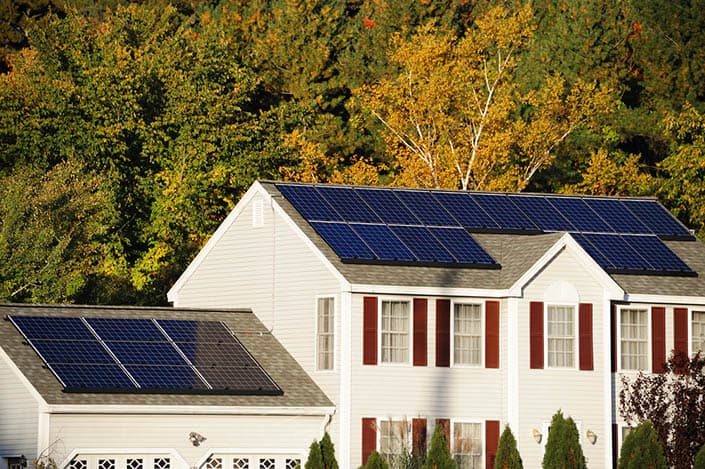Utah’s State-based Solar Tax Credit in 2020 and Beyond

The fight for power within the electric industry is real. In 2017, Rocky Mountain Power, Utah’s largest electric utility, proposed a change to its Utah solar metering program.
However, because of the voice of Utah citizens, not all of the changes were imposed, and a settlement resulted. The utility then agreed to implement the transitional program.
After the transitional program, the proposed metering rates will be re-assessed. This agreement, however, didn’t take into account the Utah solar tax credit. This incentive was set to phase-out during the transitional program—skewing the data.
The Utah Solar Tax Credit
Because this tax credit was going to skew data, hardworking solar advocates worked to prolong the Utah solar tax credit, and Gov. Herbert signed Senate Bill 141 into law in March of 2018. This law extended the state solar tax credit by two years.
Utah’s solar tax credit currently is frozen at $1,600, but it won’t be for long. Starting in 2021, it will resume its yearly phase down until this tax credit reaches zero at the end of 2023.
Utah solar customers would be wise to invest in solar before the available funding is no longer within their reach.

The Solar Income Tax in Utah
Because Utah has a state income tax, they can use this tax to incentivize solar. This solar tax credit is a dollar-for-dollar credit deducted from the Utah state taxes that homeowners would have owed the state. If the homeowner doesn’t owe state taxes, they can’t take advantage of this credit.
Utah Solar Tax Credit Carryover
Because the Utah tax credit is dependent on how much taxes the taxpayer owes, it will not credit more than this amount. Instead, the credit rolls-over to the following tax year.
This credit will carry over for up to four years, meaning customers don’t need to owe the amount in one year to receive the full incentive. Using the solar state tax credit helps homeowners save money on their solar array. However, more savings are available to those that combine it with the federal solar tax credit.
Saving More With the Federal Solar Tax Credit
The investment tax credit (ITC) is a federal tax credit. It offers a tax credit equivalent to a certain percentage of the cost of the array toward owed federal taxes. In 2020 this percentage is 26 percent.
The federal solar tax credit makes solar affordable for the general public. It has not only made purchasing residential solar possible for many homeowners, but it has also made utility and business solar possible.
Because this credit cuts the price of solar, it increases the return on investment of solar, which is the reason why it has caught on like wildfire.
Taking Advantage of the Federal ITC with the Utah Tax Credit
Only those that owe federal taxes each year qualify for the federal solar tax credit. These credits can also carry over from one year to the next. Like the Utah solar tax credit, customers don’t need to owe the full amount in the first year.
Benefits of Installing Solar in 2020
While solar advocates worked hard to extend the ITC, the House removed the solar extension from the annual House spending package. In 2020, the Federal ITC phased down to 26 percent of solar costs, and it will continue to decrease each year.
Because of these decreasing incentives, those that take advantage of solar now will save the most. It doesn’t make sense for homeowners that can qualify for solar to wait.
Unfortunately, there are many out there that still can’t qualify for solar, which is why solar advocates are continuing to look for ways to decrease the cost of solar. The phase-down is not the end of Utah’s solar industry. There is still hope for those who want solar but aren’t ready to buy it.
The Future of Utah Solar Panels
By 2022 this federal incentive will no longer be available for residential installations. By 2024 both the federal and state solar incentives for residential solar will no longer exist. However, dissolving these solar incentives does not mean solar companies will collapse.
While these state and federal incentives have helped make solar affordable, it was never a permanent solution. Over the years, innovation in the solar industry has decreased the price of solar panels significantly. Some cities and states have streamlined solar permitting, significantly reducing some of the solar soft costs.
These are just a few of the ways in, which solar will continue to thrive, and it is why Go Solar Group is unfazed by the gradual reduction of these policies.
Solar Companies are Prepared for Phase Down
The price for solar was astronomical before the ITC. The chances of anyone affording a solar array were slim to none unless they had cash to burn.
These incentives have helped increase the solar market and decrease solar prices. However, it has been a band-aid for the solar industry, not a solution. Quality solar companies are ready for the band-aid to be removed.
The solar industry is already preparing for the inevitable. The Solar Energy Industries Association (SEIA) has proposed a plan to combat price increases.
A Solution to Price Increases: Streamlined Solar Permitting
The SEIA has found that a majority of soft costs come from permitting. On average, these costs equal about 30 percent of the cost to install solar.
Permitting is expensive because it varies with each location. Permits change not only from state to state but from city to city. The SEIA is proposing these permits switch to standardized online permitting and instantaneous permitting for qualified projects.
Streamlined permitting is a solution that local, state, and federal governments should undertake together. The federal government has yet to embrace this solution. However, some states have already started to implement legislation that will enable streamlined solar permitting.



Send a Message
Oops! We could not locate your form.